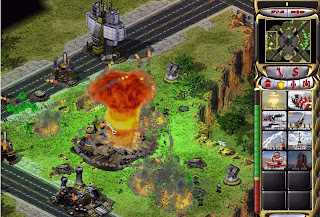As you know from my bio, I collect Civilian Civil Defense items. I have a rather extensive collection, and I love to talk about my items and the Cold War every chance I get. Well, when National Geographic's "America's Lost Treasures" came to town, I decided to enter one of my manuals to be shown on the program.
I submitted my application and promptly forgot about it, until I received and email stating that my manual had been accepted for the show... along with myself to talk about it. I love teaching about the Cold War, but usually to smaller groups. However, I feel so strongly about the Cold War that I was willing to go on TV and talk about it. A television appearance is a very daunting thing for a normally shy person, but I decided to take one for the team. Besides... its not like they were going to put a lot of focus on my artifact, right? It wasn't exactly a lost treasure per se...
Yeah, it got mentioned alright. I just had to suffer through watching myself on TV for two painful minutes as I went on to describe my manual and a little bit about the Cold War. They weren't kidding when they said they would shoot for 1/2 hour but only use 2 minutes worth! I knew that it wasn't going to be a lot of time, but I never expected 2 whole minutes...
Even though it was incredibly uncomfortable for me to watch, I understand that it was for the greater good. You see, most of the people I encounter do not see Cold War objects as "lost treasures". However, they are quickly becoming lost treasures and that is why we need to preserve them. Many of the people I show my collection to begin our conversation with "oh, my relative had a bunch of this stuff and we threw it away..." This breaks my heart every time I hear it.
If you are reading this blog, then you are obviously interested in the Cold War. You may even be a veteran of the Cold War or have a collection of you own. The thing that we need to remember is the Cold War is slipping away from people's memory and we need to preserve it and talk about it. If we keep quiet and choose to be shy about Cold War rather than talking to people, then in 50 years artifacts from the Cold War will indeed become lost treasures.
So, if you would like to see me on TV check your local listings for the National Geographic Channel's "America's Lost Treasures: Milwaukee". Don't laugh too hard. (As a side note, they incorrectly listed that sirens other Cold War stuff is worth more than the book. Even though they might monetarily be worth more, the paper stuff is still more rare.) :)





